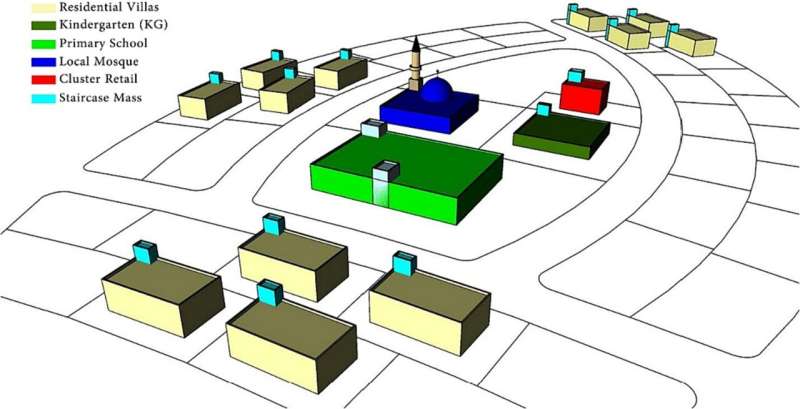![(a) Sunflower head constructed by 21 and 34 Fibonacci spirals [49]. (b) Schematic outline for the proposed sunflower pattern city model. Credit: Renewable Energy Focus (2023). DOI: 10.1016/j.ref.2023.100527 Scientists design 'sunflower' city to boost solar energy in countries with relatively low levels of sunlight](https://scx1.b-cdn.net/csz/news/800a/2024/scientists-design-sunf.jpg)
Inspired by the distribution of sunflower seeds, a group of scientists say they have developed a new city-pattern that ensures the best distribution of solar energy utilization "in low solar radiation countries."
"Our new city-plan bears close resemblance to the distribution of seeds in sunflowers. This distribution ensures the best utilization of solar energy," says Dr. Ammar A. T. Alkhalidi, University of Sharjah's Associate Professor of Sustainable and Renewable Energy Engineering.
Dr. Alkhalidi is the lead author of a new study titled "Sunflower-inspired urban city pattern to improve solar energy utilization in low solar radiation countries." The study is published in journal Renewable Energy Focus.
"The alternating distribution in the sunflower pattern allows the sun to reach every building in this pattern equally. The results showed that the proposed sunflower pattern outperforms the grid and radial patterns by 4% for roof areas and 12% for façade areas," adds Dr. Alkhalidi.
The study, in which scholars from Iraq, Jordan as well as the United Arab Emirates took part, "investigates the maximum available sunny areas for the buildings' surfaces (rooftops and facades) generated in low solar radiation with long shadow length locations. This has been done by studying the orientation and distribution of the residential plots in the different urban panning patterns."
"For investigative purposes, a city model is planned according to the most common urban planning patterns, which are grid and radial patterns in addition to a newly proposed and novel sunflower urban planning pattern that mimics Mother Nature," the authors write.
The scientists select different cities in the world to perform their solar energy simulation on their sunflower city pattern. For cities with limited solar energy, they select Warsaw as an example "of low solar radiation and long shadow length city."
Because their model allows the sun to equally reach every building in their new city plan, the authors find that their proposed sunflower pattern outperforms the grid and radial patterns by a percentage of 4% for the available sunny rooftop areas and a percentage of 12% for the available sunny facade areas.
Extant city pattern designs, according to Dr. Alkhalidi, mainly pursue two main building patterns: the circular radial pattern and the grid pattern. In the former, the city is surrounded by circular roads as is the case in major Islamic cities like Baghdad which was built in the eighth century. The latter is a European city plan of residential quarters in which streets run at right angles to each other, an example of which is Barcelona.
"By examining the primary results from the simulation process, it was found that the selection criterion for calculating the available sunny areas for buildings' surfaces, which is the main goal of this study, has to be done based on the shadow length and not based on a climatic zone," the authors write.
The sunny area in the sunflower pattern is calculated by the unshaded rooftop area that can be used for various solar applications. "The study aimed to present a new theoretical city pattern, sunflower pattern, and investigate if it can yield the maximum available sunny areas when compared to other city patterns, grid and radial," the authors note.

The authors adopt what they call "simple parameters and characteristics" in the construction of their proposed new city for which they provide three different sunflower design patterns. "The buildings' geometry was not changed to ensure that the results were not affected by any factors. Only buildings' orientation and plot distribution were changed which are the main parameters of this study," the authors maintain.
More information: Ammar Alkhalidi et al, Sunflower inspired urban city pattern to improve solar energy utilization in low solar radiation countries, Renewable Energy Focus (2023). DOI: 10.1016/j.ref.2023.100527
Citation: Scientists design 'sunflower' city to boost solar energy in countries with relatively low levels of sunlight (2024, February 19) retrieved 19 February 2024 from https://techxplore.com/news/2024-02-scientists-sunflower-city-boost-solar.html
This document is subject to copyright. Apart from any fair dealing for the purpose of private study or research, no part may be reproduced without the written permission. The content is provided for information purposes only.
